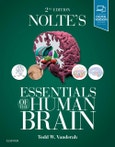- Includes explanatory color illustrations and brain images that visually depict structure-function relationships and key neuroscience concepts.
- Provides multiple-choice and comprehensive review questions with explanations that cover core topics, so you can test and develop your knowledge.
- Includes student-friendly features, such as chapter outlines, key concept boxes, high-yield headings, study questions at the end of each chapter, a comprehensive quiz with clinical vignettes, and blank diagrams that can be used for labelling practice. - Focuses on the clinical aspects of the nervous system with updated neuroscience content, integrated pathology and pharmacology content, and more clinically relevant questions.
- Student ConsultT eBook version included with purchase. This enhanced eBook experience allows you to search all of the text, figures, references, and animations, designed to produce a more rounded learning experience.
Table of Contents
Chapter 1: Introduction to the Nervous System
Chapter 2: Development of the Nervous System
Chapter 3: Gross Anatomy and General Organization of the Central Nervous System
Chapter 4: Meningeal Coverings of the Brain and Spinal Cord
Chapter 5: Ventricles and Cerebrospinal Fluid
Chapter 6: Blood Supply of the Brain
Chapter 7: Electrical Signaling by Neurons
Chapter 8: Synaptic Transmission between Neurons
Chapter 9: Sensory Receptors and the Peripheral Nervous System
Chapter 10: Spinal Cord
Chapter 11: Organization of the Brainstem
Chapter 12: Cranial Nerves and Their Nuclei
Chapter 13: The Chemical Senses of Taste and Smell
Chapter 14: Hearing and Balance: The Eighth Cranial Nerve
Chapter 15: Brainstem Summary
Chapter 16: The Thalamus and Internal Capsule: Getting to and from the Cerebral Cortex
Chapter 17: The Visual System
Chapter 18: Overview of Motor Systems
Chapter 19: Basal Ganglia
Chapter 20: Cerebellum
Chapter 21: Control of Eye Movements
Chapter 22: Cerebral Cortex
Chapter 23: Drives and Emotions: The Hypothalamus and Limbic System
Chapter 24: Formation, Modification, and Repair of Neuronal Connections








